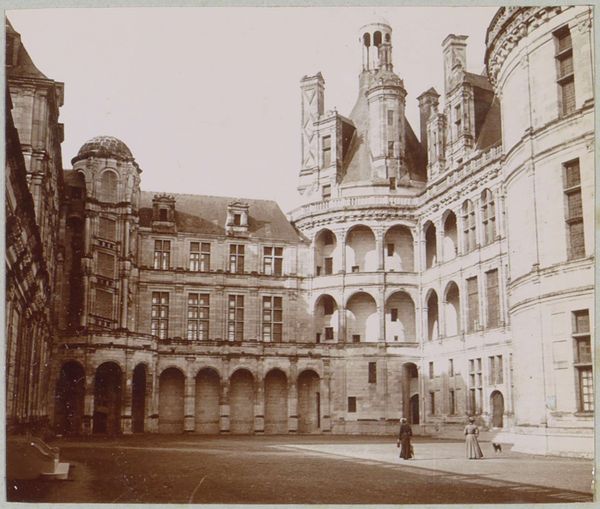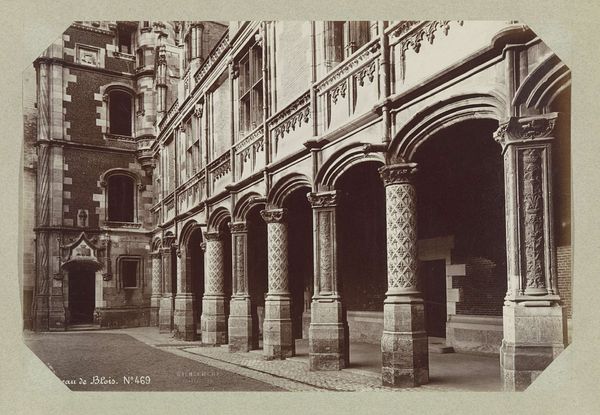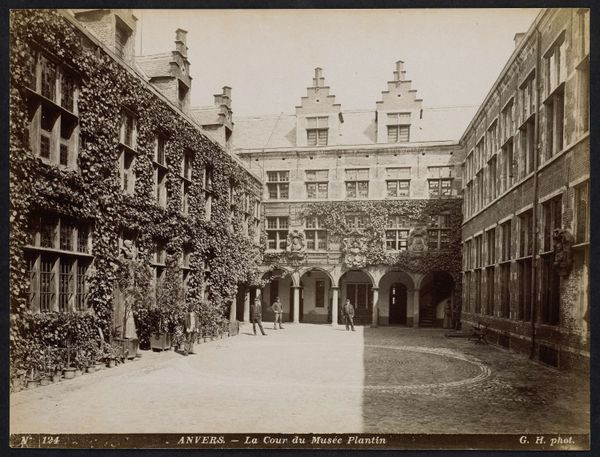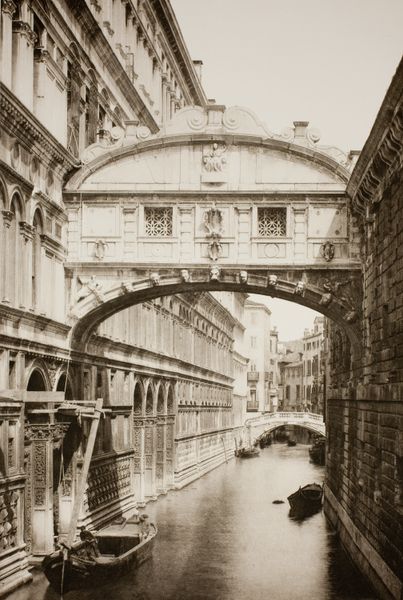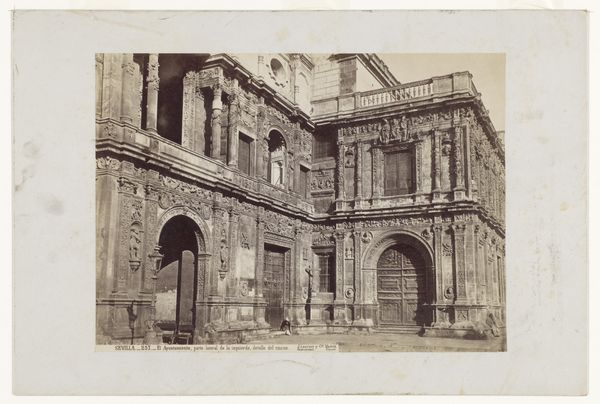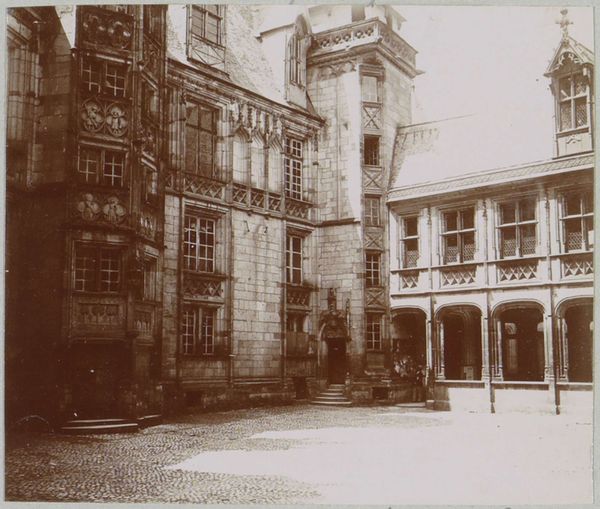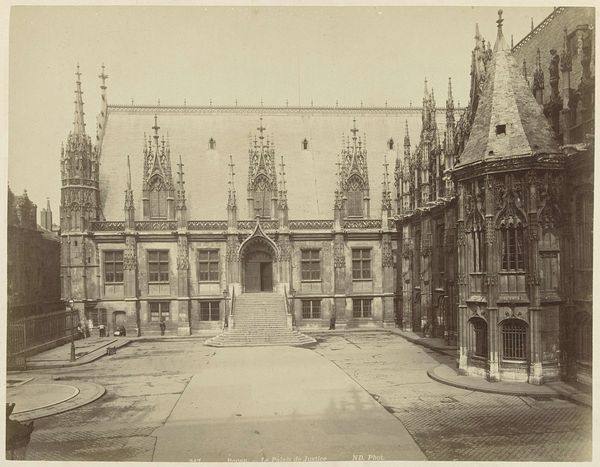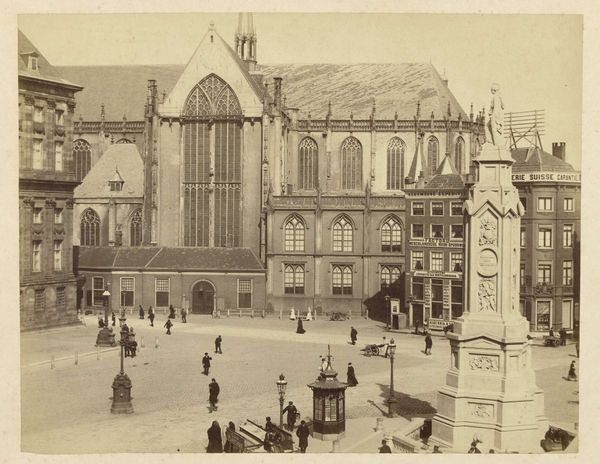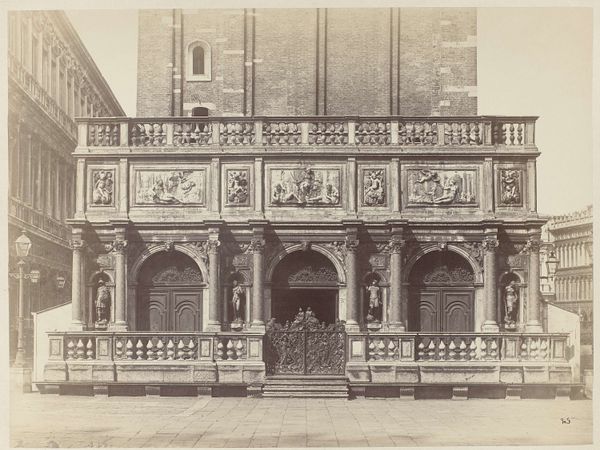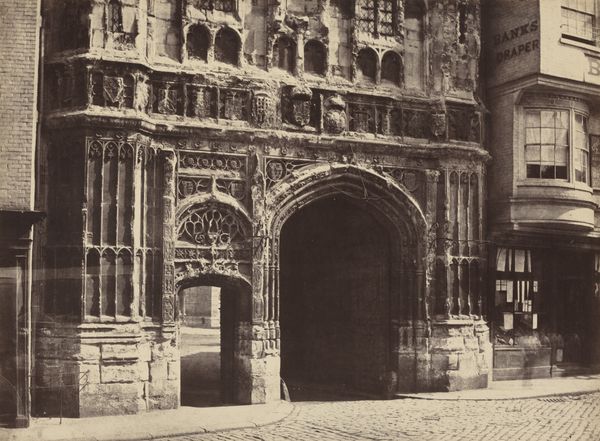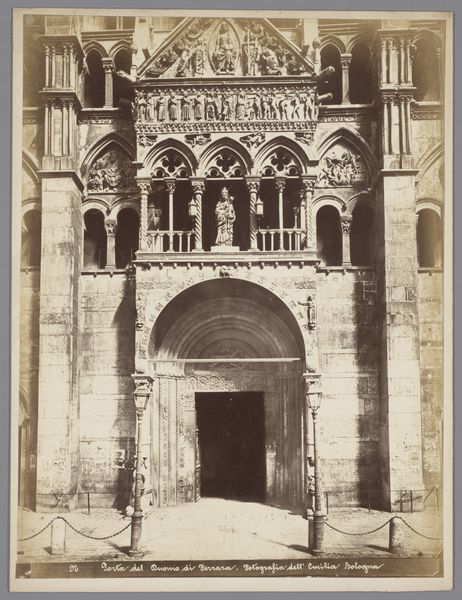
print, photography, gelatin-silver-print, architecture
#
neoclacissism
#
statue
# print
#
landscape
#
outdoor photograph
#
photography
#
gelatin-silver-print
#
cityscape
#
academic-art
#
architecture
#
statue
Dimensions: height 240 mm, width 352 mm
Copyright: Rijks Museum: Open Domain
Editor: This gelatin-silver print, titled "École des Beaux-Arts te Parijs" by Charles Marville, dating from 1850-1851, presents a view of a courtyard in Paris. The monochrome tones emphasize the stone texture and architectural details, and I'm struck by how it captures the rigid, academic feel of the building. What’s your take on this piece? Curator: I see a fascinating intersection of materiality and power. Consider the labour involved in the construction of this École, from quarrying the stone to the intricate carvings. Each stage represents a hierarchy, where skilled artisans are enacting the vision of the bourgeoisie, shaping the very foundation of artistic training in the Western world. Editor: So, you’re saying the image isn’t just a record but a document of socio-economic stratification? Curator: Precisely. Marville’s choice of photography, a relatively new and reproducible medium at the time, further democratizes, while simultaneously somewhat alienating the meticulous craftsmanship traditionally celebrated in ‘high art.’ The building is imposing and made from valuable materials which required specialized labor. Where did these materials come from, and at whose expense was it built? Editor: That makes me think about how the Beaux-Arts style, meant to embody classicism, paradoxically becomes a symbol of 19th-century industrial progress. Curator: Exactly. The camera doesn’t lie, as they say, so how complicit is Marville himself in constructing and disseminating a very controlled image? Editor: It really reshapes my initial reading. I was so focused on the architectural beauty but missed the power dynamics etched into every stone. Curator: Indeed, seeing beyond the surface is crucial, whether we speak of architecture, sculpture, or a silver gelatin print. Every element implies cultural power at work. Editor: Thanks. I'll definitely be thinking more about material culture and the social contexts embedded in what I see going forward.
Comments
No comments
Be the first to comment and join the conversation on the ultimate creative platform.
